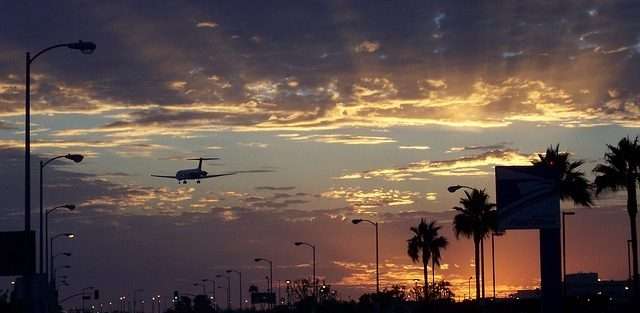Airway Distance

Airway distance is the total distance flown by an aircraft between its point of origin and destination. This includes additional routing requirements by air traffic control, rather than a straight line between two points. This is significant in the jet charter industry because the further an air carrier deviates from a straight-line trajectory, the longer the flight takes and the more it costs to operate. However, as mentioned, charter flights rarely travel ‘straight as the crow flies.’ That’s because airspace is organized into pre-determined routes. They’re kind of like roads, in a sense. They provide an efficient, organized way to get from Point A to Point B, but it might not provide the most direct route possible.
Predefined Flight Paths
Let’s say an air carrier flies passengers from Chicago to New York aboard a Hawker 850XP charter. When the operator submits the flight plan, they’ll have an idea of the expected airway distance. The journey will be comprised of a series of legs, which are measured between established waypoints. However, during the course of flight, the pilot might have to deviate from the flight plan due to weather, or some other type of emergency. In most cases, this will increase the airway distance. There are factors that can affect airway distance. For instance, so cities have mandated noise ordinances that prevent aircraft from flying directly overhead. Additionally, an air carrier will sometimes be required to avoid the airspace surrounding a major airport to mitigate the potential for an in-air collision. Military installations and other government facilities and infrastructure are often designated as no-fly zones.
Airway distance is the total distance flown by an aircraft between its point of origin and destination. This includes additional routing requirements by air traffic control, rather than a straight line between two points. This is significant in the jet charter industry because the further an air carrier deviates from a straight-line trajectory, the longer the flight takes and the more it costs to operate. However, as mentioned, charter flights rarely travel ‘straight as the crow flies.’ That’s because airspace is organized into pre-determined routes. They’re kind of like roads, in a sense. They provide an efficient, organized way to get from Point A to Point B, but it might not provide the most direct route possible.
Predefined Flight Paths
Let’s say an air carrier flies passengers from Chicago to New York aboard a Hawker 850XP charter. When the operator submits the flight plan, they’ll have an idea of the expected airway distance. The journey will be comprised of a series of legs, which are measured between established waypoints. However, during the course of flight, the pilot might have to deviate from the flight plan due to weather, or some other type of emergency. In most cases, this will increase the airway distance. There are factors that can affect airway distance. For instance, so cities have mandated noise ordinances that prevent aircraft from flying directly overhead. Additionally, an air carrier will sometimes be required to avoid the airspace surrounding a major airport to mitigate the potential for an in-air collision. Military installations and other government facilities and infrastructure are often designated as no-fly zones.








